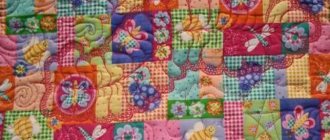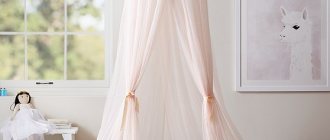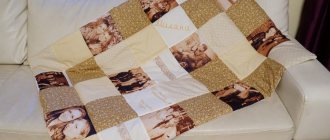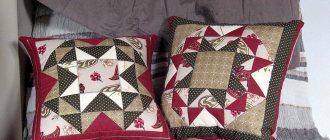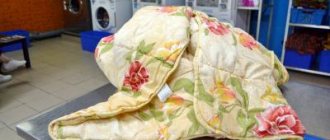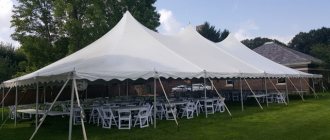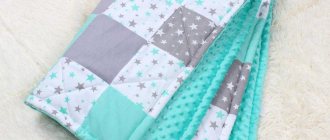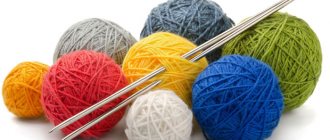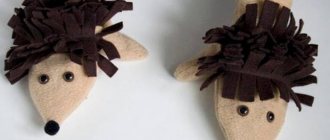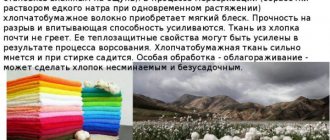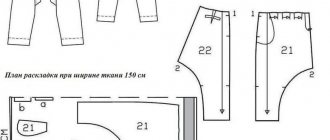Blankets with artificial filling inside have many advantages over their down or cotton counterparts. Thus, a padding polyester blanket is lighter in weight, it is much more convenient to wash than, for example, a down blanket, and it dries quite quickly. It is also important that the synthetic winterizer is hypoallergenic, it does not take up much space, so you can take it with you even on a hike. Today we propose to talk about how to sew a blanket on padding polyester with your own hands, how to choose high-quality material, how to care for the finished product so that it lasts as long as possible without losing its positive properties. But first things first!
What is synthetic winterizer?
Over the years, synthetic fillers have enjoyed surprising popularity. Perhaps the leader among artificial materials can be called synthetic winterizer. Its popularity can easily be explained by its low cost and ease of maintenance. It is indispensable for the production of upholstered furniture and warm clothing, mattresses and pillows, blankets and many other products that accompany a person in everyday life. In general, the concept of “sintepon” is a collective one; it combines three types of material that differ from each other in components, purpose and properties. By the way, padding polyester is sometimes called a synthetic version of batting. Synthetic winterizer is produced in the form of a non-woven fabric; it contains synthetic fibers that were obtained either from primary or secondary raw materials. Let's consider what properties are characteristic of this material, what it looks like, what disadvantages and advantages it has.
Varieties of padding polyester
Today there are three varieties. These are holofiber, sherstepon, synthetic fur. All these types can be called improved versions of the most common padding polyester; they have a number of advantages, because their production technologies have been improved, and additional materials have appeared in their composition. Thus, sherstepon is made from sheep wool and synthetic fibers. Thanks to this, the material turns out to be unusually strong, it is protected from knocking, which allows it to be used as a filler for a superbly light and warm blanket. Suitable for blankets and synthetic feathers. This material is characterized by lightness, softness, and this filler is incredibly warm. That is why, if you are thinking about what and how to sew a blanket from padding polyester, pay attention to this variety, such as padding polyester. The finished product will delight you with the fact that it will not go astray and will last for many years.
Production technologies
In order to sew a blanket from padding polyester yourself, you need to choose high-quality material. To do this, you need to familiarize yourself with the methods of its manufacture. Let’s say right away that this filler can be made from both primary and secondary raw materials. Of course, good quality material can only be obtained in the first case. The fact is that when using primary raw materials, pure polyester fibers are used, to which natural fibers are sometimes added, for example wool or cotton. It is important to note that high-quality padding polyester consists of several layers that have different directions. This ensures high strength and durability of the material. Fillers made from recycled materials, of course, are low in price and not particularly high in quality. Often plastic bottles and even disposable tableware are used to make it! Experts note that such material deteriorates very quickly; after a couple of washes, it pills or gets knocked down.
Experts identify three methods for producing such filler as synthetic winterizer. The best material is obtained using the needle-punched method. If you are thinking about sewing a baby blanket from padding polyester, pay attention to the filler obtained using this technique. Wear-resistant filler is also obtained by using the so-called thermal method. In this case, the material is produced under high temperatures. The cheapest method is emulsion: synthetic fibers are bonded together using latex glue. The finished fabric is airy and incredibly soft, but cannot boast of particular strength.
Requirements for materials for sewing a baby blanket and tips for choosing them
Pay special attention to the choice of materials for making a baby blanket. They have to:
- allow air to pass through well (otherwise, even if the product is very thin, the formation of prickly heat cannot be avoided);
- have good hygroscopicity (the ability to absorb and release moisture);
- be hypoallergenic;
- have high quality and be natural: carefully look at the composition on the label.
Buy handicraft supplies only from trusted stores. Not everyone honestly writes the truth about the composition on the label of materials, so it is very easy to be deceived when purchasing. You can only be confident in well-established brands, as they value their reputation and will not deceive their customers in this way.
Main material
Suitable for fabric blankets:
- flannel or flannel - hypoallergenic lightweight material, pleasant and soft to the touch, made of 100% cotton;
- linen is a lightweight natural fabric that is highly hygroscopic, ideal for sewing blankets for the summer season;
Linen is an ideal material for summer baby blankets - fleece is a synthetic material with a very soft surface and light weight, easy to care for;
- chintz - 100% cotton fiber, ideal for sewing a patchwork quilt, has a very low cost and many color options;
- kulirka is a thin cotton material that is highly hypoallergenic and is also perfect for sewing a patchwork quilt.
Thin knitted kulirka material is great for sewing a baby blanket
If you decide to knit a blanket, keep in mind that it makes sense to make only thin versions that are suitable for summer and warm autumn or spring, since such products do not have high warming qualities. Only a thin knitted blanket can be sufficiently soft and light. Thick and warm options are suitable as a bedspread for making a crib.
The following yarn is suitable for knitting a baby blanket:
- Pekhorka, “Children's Cotton” series is a thin, lightweight yarn that consists of 100% mercerized (a method of processing yarn) cotton, products made from it are very durable and have high wear resistance;
Mercerized yarn always has higher strength and wear resistance, but at the same time it is more rigid compared to materials of other processing methods - Vita Cotton Charm is a thicker yarn, but still very light, also perfect for the warm season, more pliable and soft compared to the previous option. Vita Cotton Charm yarn is also 100% cotton
- JarnArt Jeans is a blended yarn consisting of 55% cotton and 45% polyacrylic; its threads are very soft and pleasant to the touch, and you won’t want to part with products made from it.
Blended yarns are always significantly better than 100% cotton options
If, when choosing yarn in a store, you are not sure that it is suitable for knitting a baby blanket, pay attention to the label: all yarn from which you can knit for children is marked baby.
Filler
There are a great variety of fillers, almost all of them are universal and suitable for both stuffing toys and blankets. They differ in different parameters: natural and artificial, hypoallergenic and not, with high heat transfer and summer options, etc. Suitable for blankets:
- Natural wool (llama, alpaca, sheep or camel) is a very good, completely natural filler. It has very high warming properties, ideal for the cold season. But it has one significant drawback - it is not hypoallergenic, so it is not suitable for children with asthma or allergies.
- Down (goose or swan) is a very light filler option that has the ability to dissipate high heat, while at the same time controlling and maintaining the required level of heat without overheating. But it also has disadvantages - it is very difficult to care for (requires special washing and drying conditions), and also has a favorable microflora for the development of feather mites.
Products filled with goose or swan down are very difficult to care for. - Bamboo is an environmentally friendly fiber with high antibacterial properties. It has UV protection, a high level of thermal insulation and hygroscopicity. The material is also resistant to frequent washing. Very soft and pleasant to the touch, does not prick through the duvet cover. True, the price for stuffing of this level is very high.
- Cotton wool (batting) is a natural and very common type of filler. It has excellent volume and high heat transfer. But it is only suitable for creating thin blankets for the warm season, as it is very heavy and would simply not be an acceptable option for a child. It is also difficult to care for, after washing it tends to bunch up and each time after drying it will have to be manually fluffed and distributed inside the blanket.
- Silk is a natural material with very high wear resistance, perfectly retains heat without creating a greenhouse effect. But due to its high quality and excellent properties it is very expensive.
- Natural sheep fur is a material with good heat transfer. The material has an elastic base in which wool fibers are securely fixed. This type is usually chosen as soft baby blankets or blankets for walks in the cold season. It is worth considering that fur is very warm, but a child may be allergic to it.
- Holofiber is a lightweight synthetic material consisting of 100% polyester. The base is non-woven fibers, with a hollow structure of spring fibers. A very good and high-quality type of stuffing, but it has one small drawback - it is less breathable than cotton or wool, due to which a small greenhouse effect is created.
Holofiber is a high-quality synthetic filler - Sintepon is a cheap replacement for the previous type of padding - holofiber. But not only is its price lower, synthetic winterizer creates the effect of a “heat gun” (strong greenhouse effect), does not tolerate washing well, caking and forming lumps, so it is very difficult to restore.
The choice is quite large, each option has its pros and cons. Choose a filler with the best properties and high quality, regardless of the price, then the blanket will not only benefit the baby, but can also serve even several children without losing quality and appearance.
Decor
The decor for a baby blanket should be as inconspicuous as possible when you run your hand over its surface, otherwise its elements will interfere or even harm the child. Eliminate any sequins, rhinestones, appliqués with voluminous details and similar decorations . Ideal would be sewn on animals, trees, etc. from different colors of fabric, small soft bows, soft lace, satin ribbons, patchwork pictures, etc.
Photo gallery: ideas for decorating children's blankets
Using the patchwork technique, you can create an entire composition on a blanket
A patchwork quilt sewn with the seams facing out looks very unusual.
You can diversify a blanket made from scraps of fabric by sewing pieces of fabric not only of different colors, but also of different sizes, creating different patterns
A very original invention - a bombon blanket, no matter what colors and fabrics are used for it, they always look very beautiful, and due to the soft filling they are also soft
Easy to sew, but very beautiful and unusual in appearance - a patchwork quilt
A patchwork blanket with owls is ideal for both boys and girls
A floral quilt decorated with lace looks very delicate.
An ideal decor option for a boy would be a patchwork blanket with cars
Positive sides
If you are seriously interested in the idea of sewing a blanket from padding polyester, you need to pay attention to the positive and negative qualities of the material. Among the advantages are its softness and airiness, heat-saving properties. Reviews of this filler often say that it is quite durable and elastic, capable of restoring its original shape. Of course, this is only possible if you choose high-quality material.
What tool will you need?
To sew, you need to arm yourself with thread and a sewing machine. It is better to choose threads numbered 40-60. And machine needles are numbered 90 -100. Don't forget about the pins, they will come in handy during the sewing process. A pattern will be convenient and appropriate for using homemade work.
It is advisable to use durable, high-quality material that can survive many washing cycles.
If the bedspread is sewn in a patchwork style, other materials will need to be used.
Patchwork technology for the production of home textiles is experiencing a real surge in popularity.
Flaws
Of course, even such an excellent filler as padding polyester has a number of disadvantages and weaknesses, which are extremely important to know about. So, if the adhesive method was used during production, allergic reactions may occur. In addition, in such a material the bond between the fibers weakens quite quickly, they disintegrate, which means the product becomes deformed and becomes unusable. It is also important that repeated washing can lead to the fact that the thickness of the material (even of fairly high quality) is reduced by two to three times. Among the disadvantages is a low level of hygroscopicity; such a blanket will not absorb moisture well. In addition, synthetic winterizer is characterized by low air permeability. In order for sleeping under a synthetic blanket to be comfortable, you need to use exclusively natural fabrics for the covering, while choosing a small filler thickness, 10 by 20 millimeters is enough.
We sew a blanket from padding polyester!
First of all, you need to decide on the size and shape of the future product. Today, the light industry offers customers more than a hundred different options for blanket sizes. If you are thinking about how to sew a padding polyester blanket, please note that the most common sizes are:
- 120 x 120 cm – for newborns;
- 140 x 110 cm – baby blankets;
- 200 x 150 cm – single blankets.
One-and-a-half and double duvets, Euro sizes, deserve special attention. So, semi-trucks can be 205 x 150 and 215 x 155 centimeters. If you are thinking about how to sew a padding blanket with your own hands for a double bed, choose from sizes 215 x 175, 210 x 180, 200 x 200 centimeters. The Euro size is characterized by parameters such as 200 x 220 and 210 x 220 centimeters.
How to properly sew a blanket from padding polyester? Be sure to take into account the height of the person for whom it is intended and the size of the bed. As for the shape, you can make a round, rectangular, square product or even a heart-shaped blanket from padding polyester!
Video: How to quilt a patchwork quilt? Secrets
- Now let's move on to the methods of stitching blankets. Square stitch for blankets, when the lines intersect at an angle of 90 degrees.
Square stitch blankets
- Diamond stitch for blankets, when the stitches create elongated diamonds. This is the classic and most common way to stitch blankets.
Diamond quilt stitch
- Also interesting and unfairly forgotten recently is the “wave” stitch method.
Wave quilt stitch
- And numerous methods of fancy stitching, the beauty of which directly depends on the experience of the craftswomen.
All kinds of stitches for children's and adult blankets
All types of stitches are performed according to the same pattern:
- Marking with chalk, washable felt-tip pen or pencil;
- Note;
- Stitching with dense stitching.
And finally, we attach a video of machine stitching a blanket.
Cutting out
Are you thinking about how to sew a padding polyester blanket with your own hands? It is necessary to cut it correctly. Experts advise using wide fabric. The fact is that in this case there will be no seams in the middle of the product. It is necessary to adjust and cut out the surface material both in length and width, usually it depends on the width and pattern applied to the fabric. It is extremely important to add allowances when cutting out. One centimeter will be needed on each side for the seam, from 2 to 15 cm will be needed for fabric shrinkage. This size depends on the quality and size of the blanket. It is important to leave an allowance for quilting. Its value depends on how thick the padding polyester you will use, how often you will place the lines, of course, the higher these indicators, the larger the allowance should be. For example, if you decide to sew a blanket on padding polyester for discharge, you will only need to add about 3 cm of allowance, but if you plan to make a Euro size blanket, voluminous and fluffy, with a large number of stitches, the allowance should be will be at least 10 centimeters.
Necessary materials
Choose fabric according to the following criteria:
- wear-resistant and durable, able to withstand repeated washing;
- natural and with antistatic effect (chintz, calico, linen, silk);
- not cause allergies in the baby;
- without toxic dyes;
- all layers must allow air to pass through well.
For the bottom of the blanket, choose a cotton fabric. It is absolutely natural, breathable, but not wear-resistant. Silk and twill are soft to the touch, but require very delicate care. The most acceptable options are cambric, satin, fleece, flannel, calico, bamboo fabric, which meets all the specified criteria. The top part of the blanket can be sewn from any fabric, as long as it is soft and natural.
The following fillers are used.
- Downy – lightweight; soft; air circulates through it, but clumps; it has a characteristic smell.
- Sherstepon – soft; absorbs moisture well and remains dry; It is not recommended to machine wash.
- Sintepon - light; does not provoke allergic reactions; washes well; not expensive.
- Hollow fiber – resistant to knocking down; very warm; does not deform during washing; more expensive than padding polyester.
- Bamboo fiber – meets all criteria; crumples.
The most popular types of filler are padding polyester and holofiber.
Calculate the amount of fabric as follows: take two lengths as measured, take into account a seam allowance of 1.5 cm on each side and 10 cm for shrinkage, i.e. total allowance is 13 cm. Calculate the amount of filler depending on the size of the blanket and the number of layers.
For sewing you will also need threads No. 40-60, machine needle No. 90-100, pins.
Step-by-step instruction
- After you have determined the length and width of the blanket, cut out a rectangle, square or oval (you can choose the shape yourself) of the size you need from a piece of padding polyester. If you want to sew a multi-layer blanket, you will need two or three layers of filling. How to sew a blanket from padding polyester if its width is less than the width of the future product? Simply cut out a strip of the required size and sew it to the main piece. A simple closed stitch, which seamstresses call “forward needle,” is suitable for this. Of course, you can stitch an additional piece, but this is not at all necessary.
- After this, you need to stack all the layers of padding polyester on top of each other, and then align their edges. If any of the edges protrudes, you should carefully trim it. Using a needle-forward seam, join all layers of filling in the center, the blanket padding along the edge. Please note: the stitches can be quite large, this will not affect the quality of the future product.
- The next step is preparing the coating for the future product. Let's say you decide to make a rectangular blanket. Prepare the fabric - two sheets, leave a few centimeters for allowances, sew three sides of the rectangle and turn it right side out.
- The resulting cover must be carefully ironed, only then can filler be inserted into it. Carefully place the padding polyester inside, straighten it and fasten it. Large stitches or pins are suitable for this purpose. Please note: under no circumstances should you lose a single pin, otherwise you will hardly be able to sleep peacefully under this blanket. Therefore, if you took, for example, 15 pins, at the end of the work there should be exactly 15 of them left! Another condition: the sides of the gasket must perfectly match the side seams of the cover.
- Speaking about how to sew a blanket from synthetic padding polyester, it should be noted that it needs to be stitched along all the side seams, while capturing the padding.
- After this, fold the cut inside on the fourth side, also capturing the filler. Then you need to mark a line at a distance of 10-12 centimeters from all edges and carefully stitch the blanket again.
If you are thinking about how to sew a quilt with padding polyester, you should only carefully stitch it in the middle. You can do this with straight lines or squares, diamonds, making some kind of pattern, playing with the pattern that is applied to the fabric. The distance between the lines should be from 20 to 40 centimeters, and the lines should be neat on both sides of the product. The blanket is ready!
By the way, using the same technology you can make a simple sleeping bag that you can take with you on a long hike. You will also need a synthetic padding pad and two panels. On one of the short sides you will need to make a drawstring, bending 2-3 centimeters. When sewing the second short side and the sides, you will need to sew in the long zipper so that the open end is on the fold. After this, you will need to quilt the blanket, carefully stitch it along the edges, and insert a cord into the drawstring!
Work process
So, first, choose a sketch
How do you want your quilt to look? The most common ones are ordinary rectangular ones, which are easy to sew for beginners, but if you have experience in needlework and don’t want to settle on common models, you can choose something more interesting, adapting to the interior of the room and the function it will perform.
Next, we select the necessary materials
First of all, we purchase the necessary fabric. Please note that it can be of any color, content and composition.
Can be used:
– natural materials (linen, bamboo, cotton),
- artificial,
- synthetic,
- mixed
Cotton is considered the most popular material for sewing blankets. The following types of fabrics are often used as covers: teak, satin, satin - jacquard, twill, percale, cambric.
If the bedspread is being made for a children's room, then we recommend: flannel, calico, flannel.
For the blanket filler, padding polyester is used, in which it is important to take into account the thickness - a thick layer will make a voluminous and airy blanket, but it will be more difficult to work with.
You also need to purchase:
- - threads in the color of the fabric,
- - needles,
- - scissors,
- - tape for edging,
- - a sewing machine - at best, otherwise, quilting a blanket by hand, although possible, takes a very long time.
Choose the material so that the future blanket best suits the purpose and interior.
We determine the dimensions, cutting and assembly of the quilted bedspread
To correctly calculate the fabric, you need to measure it with the dimensions of the bed, in length, width and height (to get an idea of how it will fall).
ADVICE! Make a schematic drawing of the blanket (to scale, respecting the proportions). Draw the lines of the planned stitches on the drawing.
Formula for calculating blanket parameters!
If d is the length of the bed, h is the height, w is the width, then the universal formula for calculating cutting will look like this:
Dina blankets = b+d
Blanket width = w+2h
It turns out three layers: back, filler, face. All of them are cut according to the same formula, only 2 cm are added along the entire perimeter of the fabric - that is, to the back and face, this does not apply to padding polyester.
Now let's stitch these layers together
To make the product more elegant, you can round the corners.
Caring for synthetic winterizer
Now you know how to sew a blanket from padding polyester. But how to properly care for this product? The fact is that a blanket with such filling requires careful care. Only in this case will it last much longer without losing its positive qualities and properties. First of all, we suggest talking about how to wash a blanket with padding polyester filling. The water temperature in the washing machine should not exceed 40 degrees; the optimal mode for the product is delicate or hand wash. By the way, please note that regular washing powder for padding polyester-based blankets is not suitable. Instead, you should use a liquid product that contains a minimal amount of various chemical components. Don't forget to put tennis balls in the washing machine drum, which will prevent the product's filler from getting lost.
It would be a good idea to use a special cover, so you can prevent any damage to the fabric you used for the surface of the blanket. Products with synthetic padding should be dried on a clothesline in the fresh air. Proper care of your blanket is the key to ensuring that it will serve you for as long as possible without losing its original qualities!
